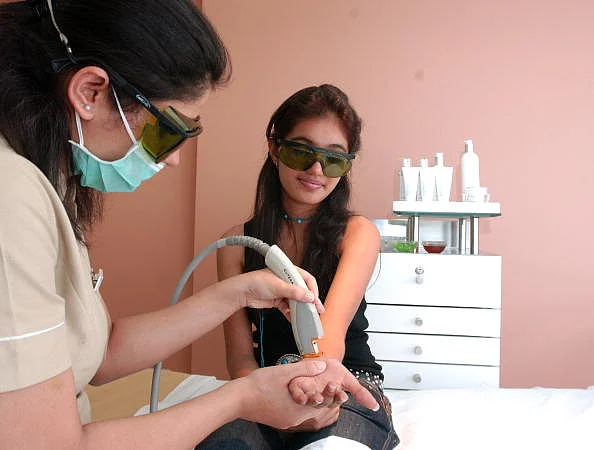It’s the summer of 2021 and the internet sees the rise of the “That Girl” archetype. She wakes up at 5 AM, works out, meditates, and has a healthy bowl of breakfast. She doesn’t consume caffeine or nicotine first thing in the morning. The focus of this archetype is wellness and self-care. She might be shown using a gua sha and drinking from a big Stanley cup, but somehow, it translates to her having her life together.
She’s successful in many aspects of her life, like her career and love life. She is an achiever at her workplace and has plenty of friends. We don’t see these other facets of her life, but it’s implied that just because she has a seven-step skincare routine and does some stretches on a mat, she’s thriving.
“That Girl” has forever changed how self-care is perceived. It's no longer about the process but about perfection. The audience is drawn to the aesthetics and the distant promise that waking up at 5 AM and working out will give them a sense of control over their lives. Influencers promote a lifestyle that feels unrealistic because they have the time, energy, and resources to create an aesthetic, slow-paced life. For many people, following a seven-step skincare routine feels excessive. This kind of lifestyle promotion often goes hand in hand with pushing brands and products. Take Stanley cups, for example. They cost $35-$45 and are just like any other water bottle, but because they’re tied to self-care, people believe that staying hydrated needs to happen with this specific cup to meet their hydration goals.
Another new trend added to the list of self-care is the Korean skincare one called “Glass Skin”. Seeing an advertisement from a popular wellness and beauty centre chain about their new treatment, their Instagram post said: “It’s a trend that is not only easy to follow but also great for your skin! Glass skin is all about achieving a clear, even complexion with a dewy, hydrated look. You can easily achieve Glass Skin Glow with the revolutionary Prismatique Glow treatment that’s taking the skincare world by storm!” Out of curiosity, an appointment was made for a free consultation.
How are self-care and influencer culture affecting beauty and wellness centres that have been pioneers of aesthetics and beauty standards? Upon entering, the receptionist asked the purpose of the visit. The goal was to investigate and understand how things are being sold and the effects of social media. But the catalogue also included slimming treatments, and they mentioned performing advanced body composition analysis, which would then suggest different massages and passive ways of toning and slimming.
As someone who grew up fat, the idea of getting that analysis done was tempting. It was about finding something new, something that hadn't already been suggested before. It felt a bit ridiculous, though, weight loss had been significant, and appetite had decreased. Specially, after moving countries and then cities, there were major lifestyle changes. This recent weight loss has brought a new level of confidence. For the first time, rejection didn’t immediately feel like it was because of being ugly and fat. Instead, it was more like, “Oh well, they’re just not interested.”
But standing in front of that catalogue at the wellness and beauty clinic, all that confidence seemed to disappear. A voice inside said: “You’ve been losing weight so easily, why push yourself for this?” Part of it was wanting validation after checking the weight, but mostly it was curiosity about how to lose even more.
The tiny halls of the clinic, with big pictures of ‘perfect’ looking people on the walls, made it easy to forget personal worth and existence. It made one question: is society really pressuring us, or are we just easy targets for these pitches? They might not directly pressurise, but they certainly feed on the fact that everyone is trying to make ends meet and has no real time for self-care. So here are some reels for you to be a passive participant. They make you feel like, “Oh yeah, I will do it like this, and then everything is going to change”, but in reality, you just stay the same until some other gimmick comes along and persuades you to stay in this loop.
With not enough personal time in today’s fast-paced world, the reality of these self-care videos can be achieved slightly less instantly by going to wellness and beauty clinics—or at least that’s what they say and make you believe. “At the end of your workday, you will feel relaxed, and it will also result in weight loss”, was how it was convincingly sold. They went to great lengths analysing the skin. Skincare routines were followed regularly, based on tips from friends and a pharmacist, but social media kept the motivation alive—seeing everyone doing it made it feel necessary to keep at it.
At the clinic, the consultant focused on hyper-pigmentation and hormonal acne, recommending hydra facial and chemical peeling to address these issues, as well as puffiness and facial contouring. “You have lots of puffiness below your eyes,” she pointed out. Although mentally prepared for a body slimming consultation, it was the skin consultation that really impacted any last piece of self-worth being held onto.
Feeling completely defeated after hearing about all the improvements that could be made, they simultaneously tried to convince that it was possible through various treatments, including Ayurvedic massage and a 10-kg weight loss programme. When the cost was finally asked about, the reply was Rs 999 per kg lost, and approximately Rs 13,000 for the hydra facial. However, booking for six or nine sessions would offer a decent concession. The thought of how expensive it was, was also voiced, and their looks suggested they were well aware of the prices. They went on to offer a range of financial support options, including EMI plans.
Between the body slimming consultation and the skin consultation, there was a brief moment with the consultant who suggested treatments after the body composition analysis. During this, it became clear that the consultant was aware of the limitations of how these services are marketed and the unrealistic expectations and pressures people face due to media and societal standards.
She said: “What people are buying? Their faces! They are selling themselves only so they have to be updated na. See, I'll tell you what happens. We see a picture in a movie in a cinema hall, but we cannot be like that, we cannot do like that. Just for an example, hum ek Kalki movie dekhne gaye usme kitna kuch dikha diya na [we went to watch Kalki 2898 AD and witnessed so many unrealistic things shown through VFX.], but hum toh nehi kar sakte hai waise [but we can't do like that]. They do body shapping also; they do plastic surgeries at such a young age because they have to do that. Normal people also do but thoda kam karte hai [but do it less].
“We get plenty of young people, but we don't give wrong suggestions. They can do Botox after two-three years or in their thirties. Haan, lekin lip fillers toh sabhi kara lete hai jinke lips patle ho bohot zyada [Yes, but everyone gets lip fillers if their lips are very thin]”, she adds.
It felt good to know that they are self-aware; however, soon it did not matter because before leaving, I took a long, hard look at myself and could only see everything that could be worked on, not the person I am or how far I have come in dealing with self-image issues.
There’s a need to break free from these beauty standard pressures in the name of self-care because they promote a specific lifestyle. The people making these reels often fit society’s beauty standards and seem to have been following these routines for years. It feels like starting these routines will lead to glowing skin and an amazing life, just like the person on the screen. But do they also show that to perform these self-care routines, one must genuinely like them first? They don’t address how much of this relates to mental health and wellbeing, nor do they focus on improving self-worth or esteem. So, are we really caring for ourselves?



















